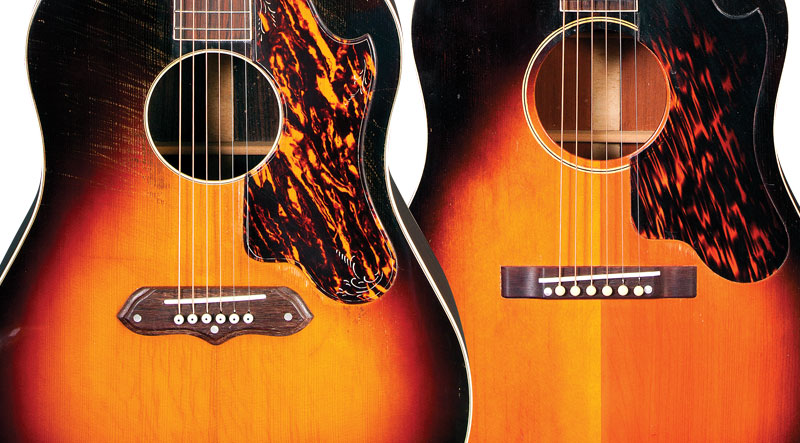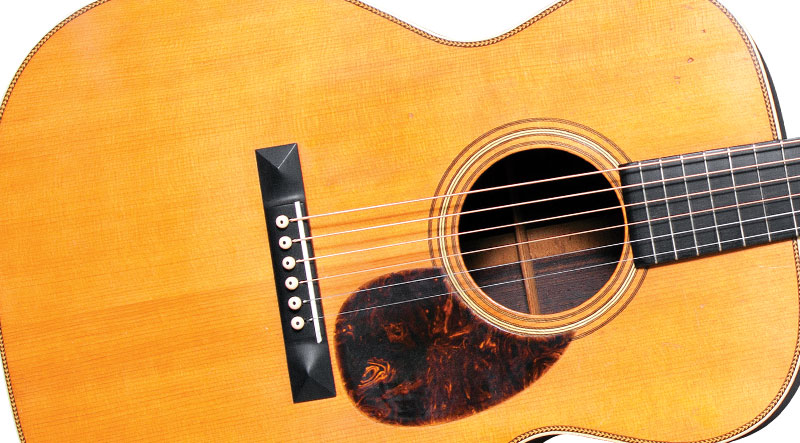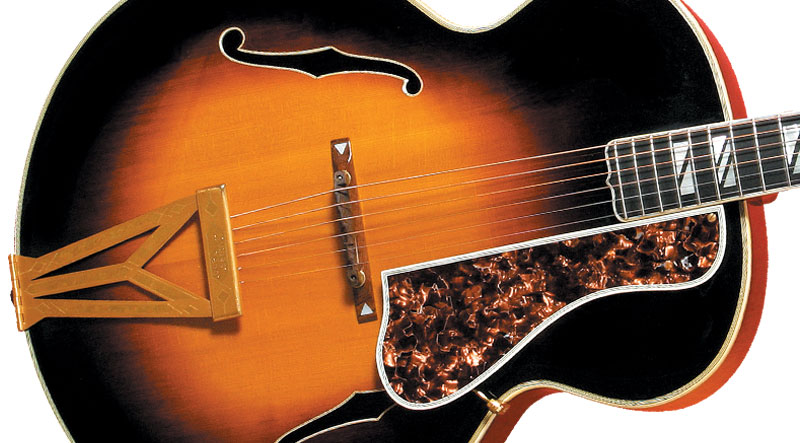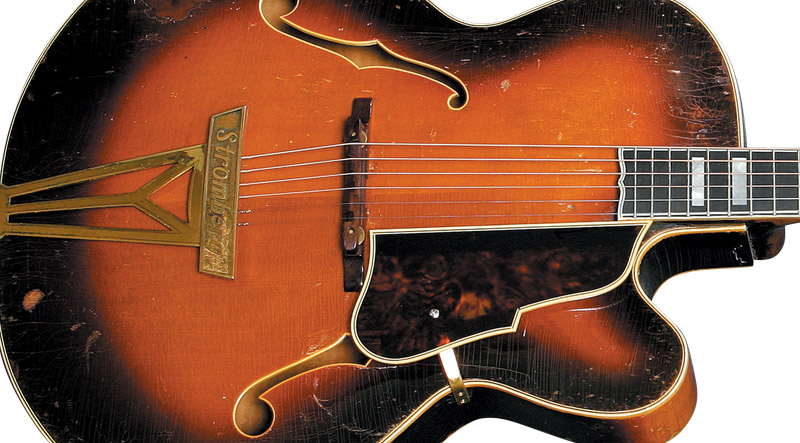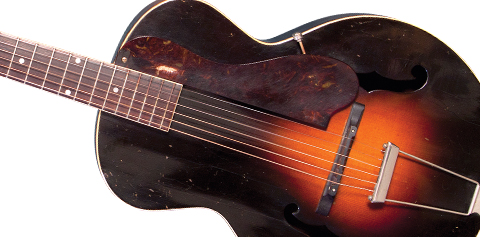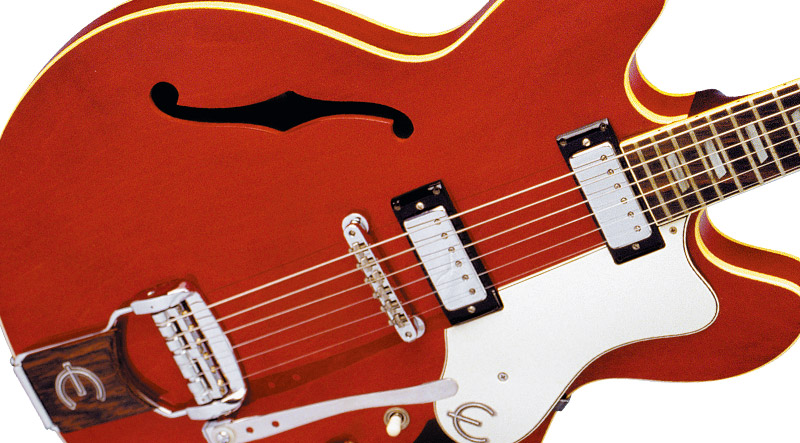-
George Gruhn and Walter Carter
Recording King Ray Whitley
As a maker of high-quality instruments, Gibson was hit hard by the onset of the Depression in the 1930s. Company president Guy Hart, a former accountant, recognized that Gibson could not survive by simply waiting for better times, and he took action, diverting some guitar production to wooden toys, creating the Kalamazoo line of budget-priced…
-
George Gruhn and Walter Carter
The Martin OM-28
Although popular music of the 1920s featured the tenor banjo as the preferred rhythm instrument, the guitar’s popularity rose steadily through the decade, and by the ’30s, it had overtaken the banjo. As had been the case with tenor banjos, mandolins, and classical/minstrel banjos in earlier eras, the best-selling fretted instrument attracted the most attention…
-
George Gruhn and Walter Carter
Gibson Super 400
Much of America was still recovering from the Depression in 1934 when Gibson introduced a guitar at a price that was almost $100 higher than its current top-of-the-line model, the L-5. At $400 (with case and zippered case cover, compared to $302 for the L-5 with case), the Super 400 seemed a more appropriate model…
-
George Gruhn and Walter Carter
D’Aquisto New Yorker Classic
During his 30-plus years as an independent guitarmaker, James L. D’Aquisto was acclaimed as the premier maker of archtop guitars. He gained the title initially as the successor to his mentor, New York maker John D’Angelico. Then, after carrying on and embellishing the D’Angelico tradition for more than 20 years, D’Aquisto suddenly changed direction, as…
-
George Gruhn and Walter Carter
1937 Martin 0-21
Martin is known for its orderly model-naming system, under which all guitars of a certain style from any particular year have the same materials, ornamentation, and other features, regardless of body size. A 1935 D-28, for example, would differ from a ’35 000-28 only in body size. Changes in specifications, such as the D-28’s change…
-
George Gruhn and Walter Carter
Fender Precision Bass
The Fender Precision Bass, introduced in 1951, was arguably more revolutionary and more influential on popular music than the Telecaster or Stratocaster. As the first commercially successful electric bass, it was a landmark in the evolution of musical instruments. As an electric bass guitar, it was even more important, as an instrument that allowed bassists…
-
George Gruhn and Walter Carter
Stromberg G-5
In the world of archtop guitars, the Stromberg name represents the ultimate instrument – in size, at least – in the big-band era of the late 1930s and ’40s. The huge 19″ Master 400 and Master 300 models are worthy of their flagship status as the best-known and most revered Strombergs. However, this smaller, short-scale…
-
George Gruhn and Walter Carter
Gibson’s Experimental Archtop
Orville Gibson invented the carved-top guitar in the 1890s. The Gibson company refined the design with the addition of f-holes in 1922, and brought the concept to full potential in the mid ’30s with larger-bodied archtops. While Gibson inarguably blazed the trail in the industry when it came to archtop design, that trail had at…
-
George Gruhn and Walter Carter
1949 Bigsby Tenor
By the advent of the solidbody electric guitar in the 1950s, tenor guitarists were a dying breed. Consequently, electric tenors are relatively rare, and a tenor guitar made by solidbody pioneer Paul Bigsby is one of the rarest of all electric guitars. And if that’s not rare enough, consider the setting of this story –…
-
George Gruhn and Walter Carter
Epiphone Riviera
The Epiphone Riviera helped reinvent Epiphone in the 1960s as a modern guitar company whose instruments sported such contemporary features as thinline, semi-hollow, double-cutaway bodies and humbucking pickups. In the minds of older guitarists, Epiphone was a traditional New York-based company, with roots in 19th-century Greece, that came into prominence with tenor banjos in the…

